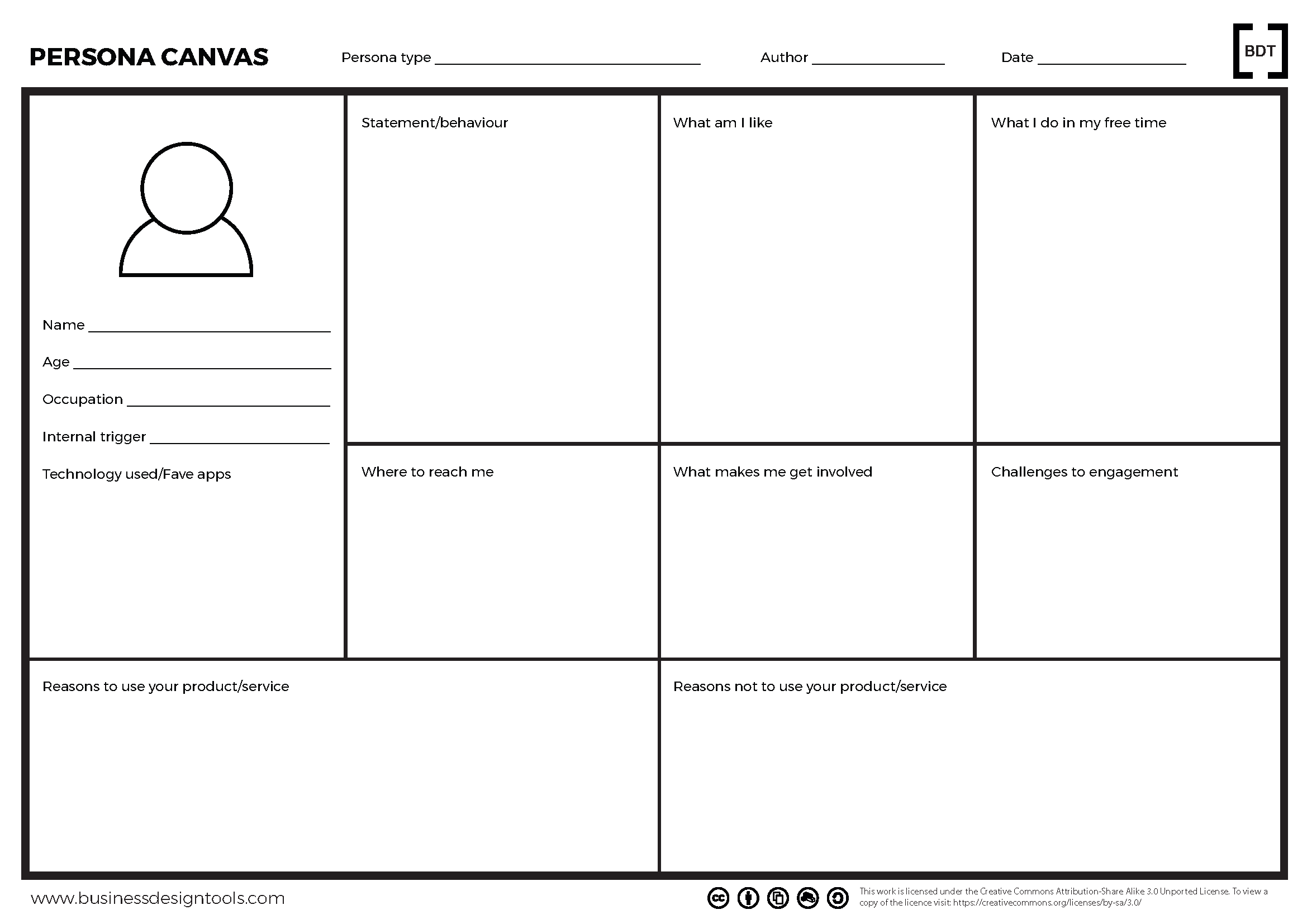Persona Canvas
Create a detailed profile of your user
By creating detailed personas, teams can more effectively tailor their products, services, and marketing efforts to meet the needs of their audience. Here are five key aspects of a Persona Canvas, highlighting its utility and components:
- Customer Empathy Tool: The Persona Canvas serves as a pivotal instrument in fostering empathy towards customers. It allows teams to give a customer segment a face and name, facilitating a deeper understanding of the customers by visualizing them as real people with specific desires, needs, and behaviors. This enables teams to “step into the shoes” of their customers, making discussions about customer characteristics more tangible and concrete [1].
- Profile Creation: A Persona Canvas typically includes key demographic information, such as age, gender, occupation, and income level. It goes beyond these basics to incorporate psychographic elements like goals, challenges, values, and fears. This combination helps to paint a comprehensive picture of the persona.
- Behavioral Insights: The canvas often highlights the persona’s behaviors, including buying habits, product usage, and brand interactions. By understanding these actions, businesses can identify opportunities to engage with their customers more effectively.
- User Experience Focus: In the context of design and user experience (UX), the Persona Canvas is utilized to ensure that the product design is user-centered. It outlines scenarios in which the persona might interact with the product or service, shedding light on potential pain points and areas for enhancement.
- Strategic Alignment: By referencing a well-constructed Persona Canvas, teams across different departments can align their strategies and decisions with the target customer’s preferences and expectations. This alignment is crucial for developing a cohesive brand experience and for making informed decisions that resonate with the intended audience.
Overall, the Persona Canvas is an essential tool for bringing customer segments to life within an organization, ensuring that decisions are made with a clear understanding of who the customers are and what they truly want or need.
